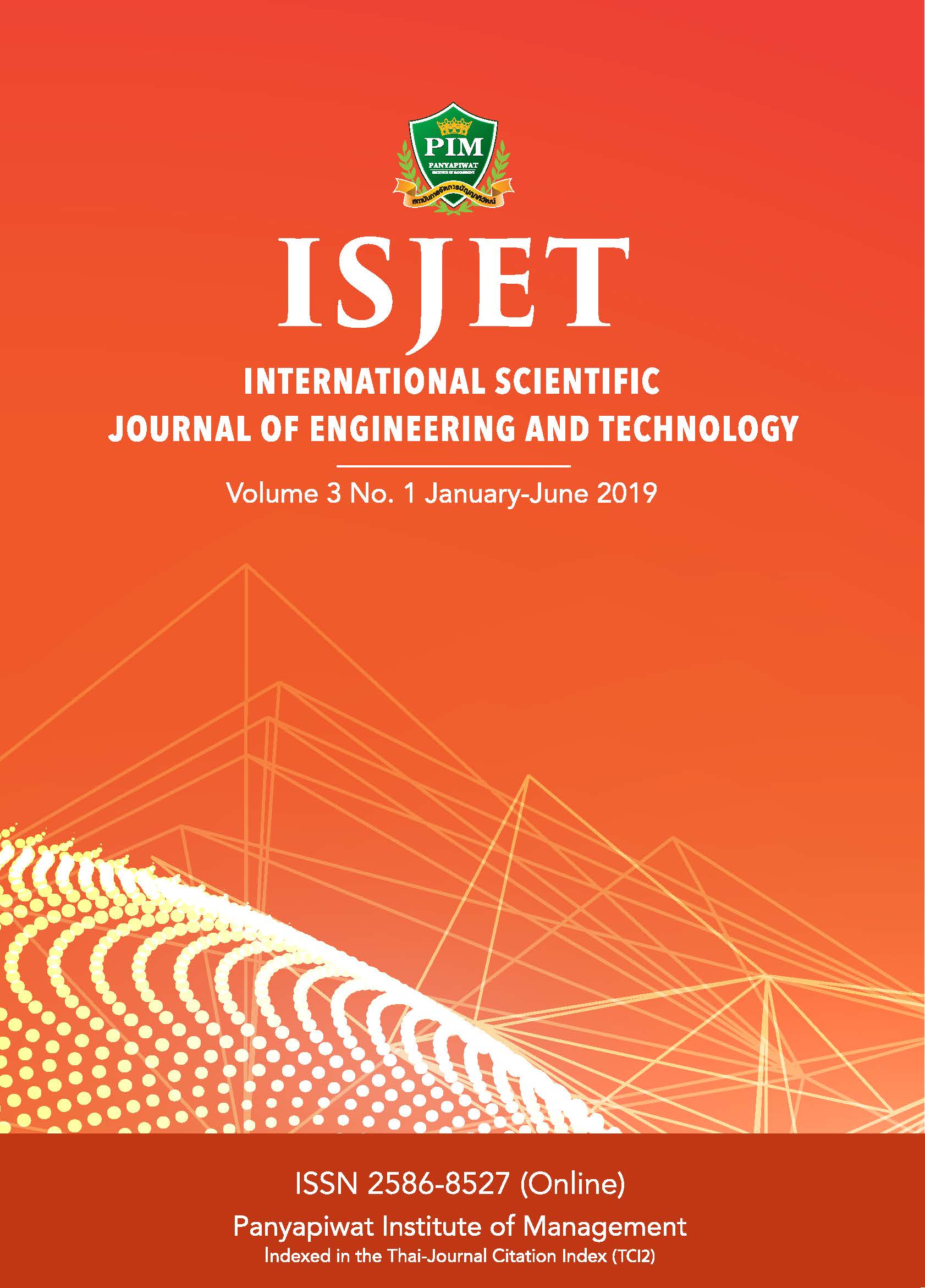Benefit of Elastically Mounted Linear Damping Vibration Isolation for Transportation System
Main Article Content
Abstract
Aim of the research is to investigate benefit of supporting the damping element elastically. A single degree of freedom base excited vibration isolation system is focused for this study. Such the isolation system can be found in transportation system which its base is exciting. The improved vibration isolation system can help in reducing the damages caused from vibration to the transporting products. The proposed model has a damping element supported elastically by a spring. The damping force characteristic is assumed to be linear function of relative velocity across the damper. Two values of linear damping ratios were employed for investigation. The frequency response obtained from mathematical and numerical examinations are compared to experimental results. The frequency responses for the system with the relaxation spring are also compared to that with rigidly connected damper. Supporting the damping element elastically is found to reduce the vibration level for the high excitation frequencies in around 10 frequency decade from the natural frequency. The stiffness of supporting spring plays the important role in lowering the vibration level. Thus, it can be concluded that the vibration level of the products being transported can be reduced by supporting the damping element elastically.
Article Details
เนื้อหาข้อมูล
References
[2] Lord.com. (2016, June). Vibration, Shock & Motion Control Products For Sensitive Equipment, Shipping Containers &
Aircraft Interiors. Lord Corporation. [Online]. Available: https://www.lord.com/sites/default/files/compressed_
PC6116_AerospaceandDefenseIsolatorCatalog.pdf
[3] M. O’Brien, L. L. Claypool, S. J. Leonard, G. K. York, and J. H. MacGillivray, “Causes of fruit bruising on transport
trucks,” Journal of Agricultural Science, vol. 35, no. 6, pp. 113-124, Nov. 1963.
[4] V. Chonhenchob, S. Sittipod, D. Swasdee, P. Rachtanapun, S. P. Singh, and J. Singh, “Effect of truck vibration during transport on damage to fresh produce shipments in Thailand,” Journal of Applied Packing Research, vol. 3, no. 1, pp. 27-38, Jan. 2009.
[5] Y. Ishikawa, H. Kitazawa, and T. Shiina, “Vibration and Shock Analysis of Fruit and Vegetables Transport Cherry
Transport from Yamagata to Taipei,” Japan Agricultural Research Quarterly: JARQ, vol. 43, no. 2, pp. 129-135, Apr.
2009.
[6] R. Zhou, S. Su, L.Yan, and Y. Li, “Effect of transport vibration levels on mechanical damage and physiological responses of Huanghua pears (Pyrus pyrifolia Nakai, cv. Huanghua),” Postharvest Biology and Technology, vol. 46, no. 1, pp. 20-28, Oct. 2007.
[7] B. Soleimani and E. Ahmadi, “Measurement and analysis of truck vibration levels as a function of packages locations in truck bed and suspension,” Computers and Electronics in Agriculture, vol. 109, pp. 141-147, Nov. 2014.
[8] J. E. Ruzicka, “Forced vibration in systems with elastically supported dampers,” M.S. thesis, Dept. Mechanical Eng.,
Massachusetts Institute of Technology, USA, 1957.
[9] J. C. Snowdon, “Steady-state and transient behavior of two- and three-element isolation mountings,” The Journal of
the Acoustical Society of America, vol. 35, no. 3, pp. 397-403, 1963.
[10] J. C. Snowdon, “Vibration isolation–use and characterization,” Journal of the Acoustical Society of America, vol. 66, no. 5, pp. 1245-1274, 1979.
[11] C. E. Crede and J. E. Ruzicka, “Theory of vibration isolation,” in Harris’ Shock and Vibration Handbook, Fifth ed., C. M. Harris and A. G. Piersol Eds., McGraw-Hill, New York, USA, 2002, ch. 30, pp. 30.1-30.43.
[12] A. Carrella, T. P. Waters, and M. J. Brennan, “Free vibration characteristics of an isolation system with a spring relaxed damper,” in ICSV12, Lisbon, Portugal, 2005, pp. 8.
[13] L. de Haro Silva, P. J. Paupitz Gonçalves, and D. Wagg, “On the dynamic behavior of the Zener model with nonlinear stiffness for harmonic vibration isolation,” Mechanical Systems and Signal Processing, vol. 112, pp. 343-358, Nov. 2018.

